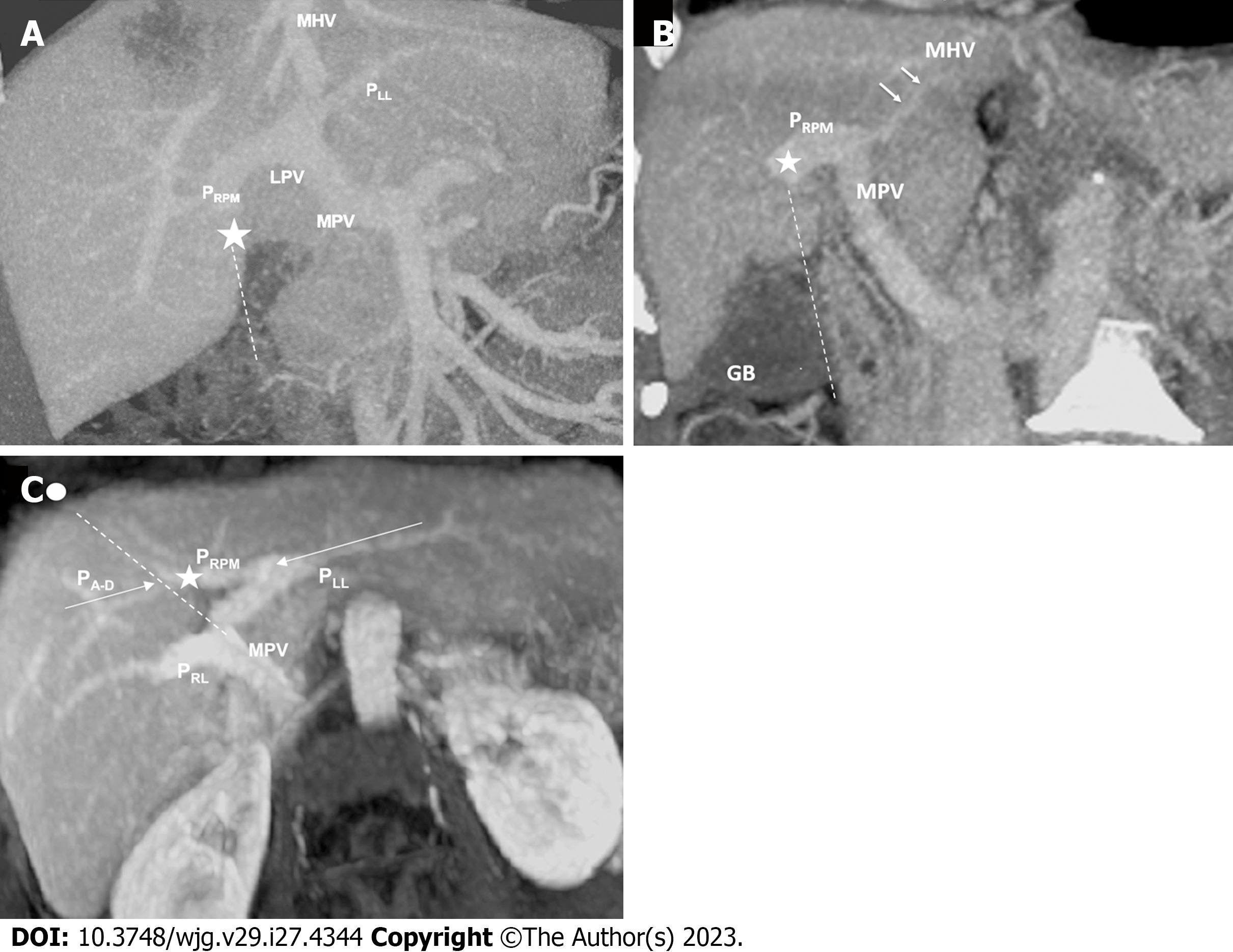Copyright
©The Author(s) 2023.
World J Gastroenterol. Jul 21, 2023; 29(27): 4344-4355
Published online Jul 21, 2023. doi: 10.3748/wjg.v29.i27.4344
Published online Jul 21, 2023. doi: 10.3748/wjg.v29.i27.4344
Figure 6 Contrast-enhanced computed tomography images of a 72-year-old woman with right-sided ligamentum teres and right-sided gallbladder: Maximum-intensity projection with oblique coronal multiplanar reformation, coronal maximum-intensity projection, and maximum-intensity projection with oblique axial multiplanar reformation.
A: Portal vein ramification of the Shindoh’s independent right lateral type[2]. Right paramedian portal pedicle forms the right umbilical portion of the portal vein (asterisk) and joins the right-sided ligamentum teres (RSLT, dotted line). The RSLT is located right to the middle hepatic vein (MHV); B: The cholecystic axis of the gallbladder (dotted line) is located right to the RSLT and the round ligament notch, that is, right to the MHV; C: On the axis (dotted line) along the main portal vein to the umbilical portion of the portal vein (asterisk) and the umbilical notch (circle), the diverging point of right anterior portal segment is distal to that of left lateral portal vein in this RSLT liver, consistent with the findings described by Yamashita et al[3]. PRPM: Right paramedian portal pedicle; PLL: Left lateral portal vein; PRL: Right lateral portal pedicle; PA-D: Right anterior portal segment; MHV: Middle hepatic vein; MPV: Main portal vein; GB: Gallbladder; LPV: Left portal vein.
- Citation: Lin HY, Lee RC, Chai JW, Hsu CY, Chou Y, Hwang HE, Liu CA, Chiu NC, Yen HH. Predicting portal venous anomalies by left-sided gallbladder or right-sided ligamentum teres hepatis: A large scale, propensity score-matched study. World J Gastroenterol 2023; 29(27): 4344-4355
- URL: https://www.wjgnet.com/1007-9327/full/v29/i27/4344.htm
- DOI: https://dx.doi.org/10.3748/wjg.v29.i27.4344









